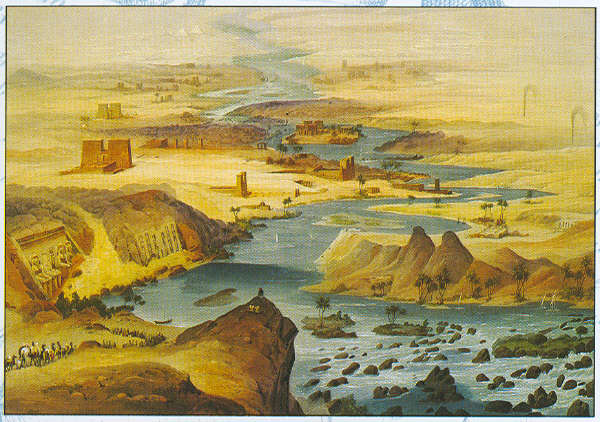Neolithic Egypt[edit]
Neolithic period[edit]
The Nile has been the lifeline for Egyptian culture since nomadic hunter-gatherers began living along it during the Pleistocene. Traces of these early people appear in the form of artifacts and rock carvings along the terraces of the Nile and in the oases. To the Egyptians the Nile meant life and the desert meant death, though the desert did provide them protection from invaders.
Along the Nile, in the 12th millennium BC, a grain-grinding culture using the earliest type of sickle blades had replaced the culture of hunters, fishers, and gathering people usingstone tools. Evidence also indicates human habitation and cattle herding in the southwestern corner of Egypt, near the Sudan border, before 8000 BC. But according to Barbara Barich the idea of an independent bovine domestication event in Africa must be abandoned because subsequent evidence gathered over a period of thirty years has failed to corroborate this.[1] In light of this the oldest known domesticated bovine remains in Africa are from the Fayum c. 4400 BC.[2] Geological evidence and computer climate modeling studies suggest that natural climate changes around 8000 BC began to desiccate the extensive pastoral lands of northern Africa, eventually forming the Sahara (c. 2500 BC).
Continued desiccation forced the early ancestors of the Egyptians to settle around the Nile more permanently and forced them to adopt a more sedentary lifestyle. However, the period from 9000 to 6000 BC has left very little in the way of archaeological evidence

No comments:
Post a Comment